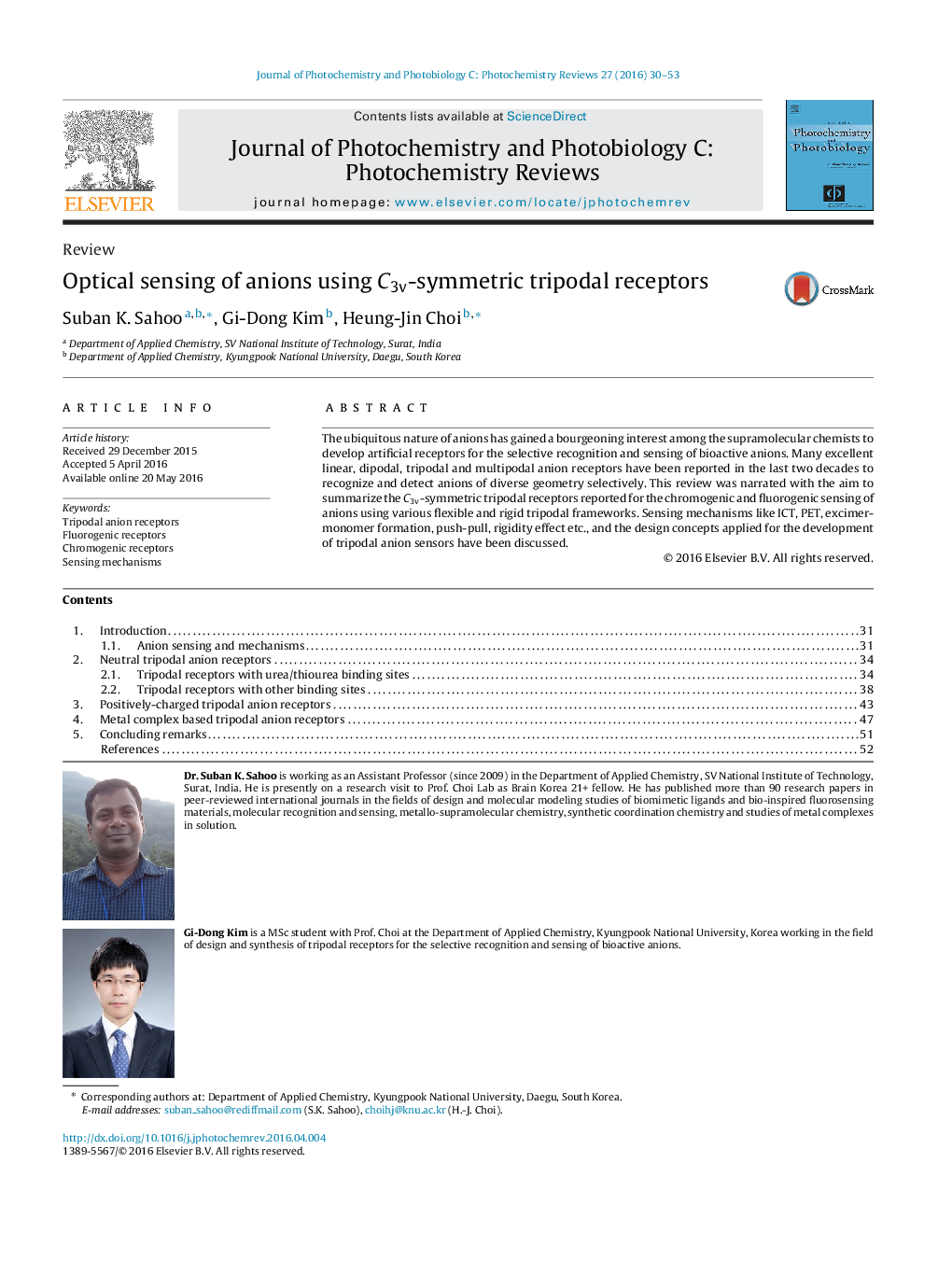| کد مقاله | کد نشریه | سال انتشار | مقاله انگلیسی | نسخه تمام متن |
|---|---|---|---|---|
| 31279 | 44731 | 2016 | 24 صفحه PDF | دانلود رایگان |

• Review summarizes the anion selective C3v-symmetric tripodal receptors.
• Chromogenic and fluorogenic sensing of anions using various tripodal receptors are discussed.
• Sensing mechanisms like ICT, PET, excimer-monomer formation, push-pull, rigidity effect etc. are discussed.
The ubiquitous nature of anions has gained a bourgeoning interest among the supramolecular chemists to develop artificial receptors for the selective recognition and sensing of bioactive anions. Many excellent linear, dipodal, tripodal and multipodal anion receptors have been reported in the last two decades to recognize and detect anions of diverse geometry selectively. This review was narrated with the aim to summarize the C3v-symmetric tripodal receptors reported for the chromogenic and fluorogenic sensing of anions using various flexible and rigid tripodal frameworks. Sensing mechanisms like ICT, PET, excimer-monomer formation, push-pull, rigidity effect etc., and the design concepts applied for the development of tripodal anion sensors have been discussed.
Figure optionsDownload as PowerPoint slideThis review summarizes the C3v-symmetric tripodal receptors reported for the chromogenic and fluorogenic sensing of anions using various flexible and rigid tripodal frameworks. Sensing mechanisms like ICT, PET, excimer-monomer formation, push-pull, rigidity effect etc., and the design concepts applied for the development of tripodal anion sensors have been discussed.
Journal: Journal of Photochemistry and Photobiology C: Photochemistry Reviews - Volume 27, June 2016, Pages 30–53